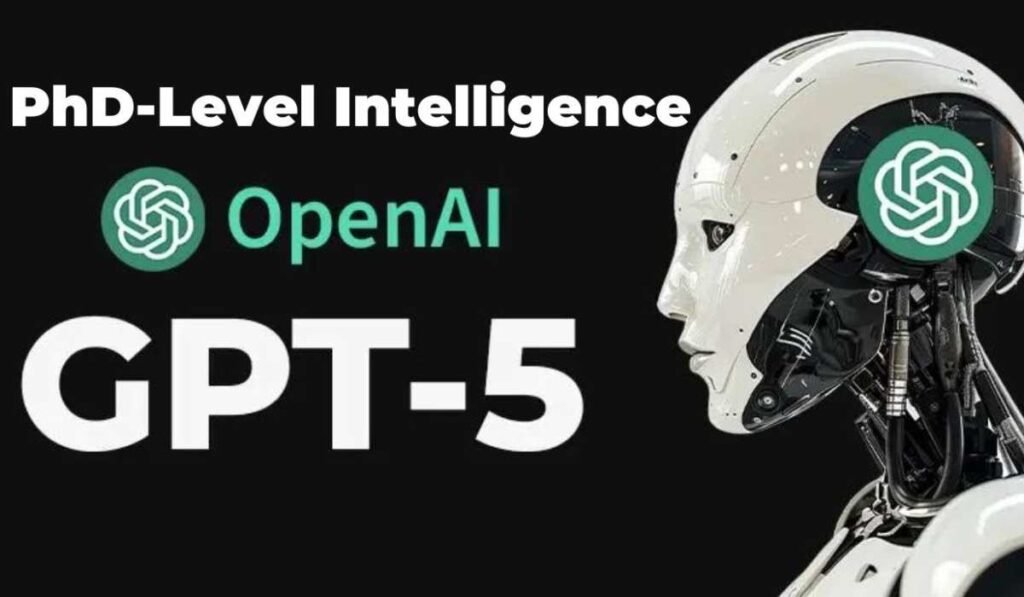In a world where technology evolves at lightning speed, the film industry is experiencing a seismic shift thanks to AI video advancements. From text-to-video generators to AI-powered editing tools, the landscape of filmmaking is transforming before our eyes. In this comprehensive guide, we’ll explore the latest AI video advancements that are revolutionizing how we create, edit, and experience visual content.
The Rise of AI in Video Production
The integration of artificial intelligence into video production has been nothing short of revolutionary. As we delve into the cutting-edge AI video advancements, it’s clear that the future of filmmaking is here, and it’s powered by algorithms and machine learning.
1. Adobe Firefly Video: A Game-Changer in AI Video Creation
Adobe, a titan in the creative software industry, has made a significant leap into the AI video arena with the announcement of Adobe Firefly Video. This suite of tools is set to integrate seamlessly into Adobe’s existing video editing ecosystem, offering filmmakers unprecedented capabilities.
Key features of Adobe Firefly Video include:
- Text-to-Video Generation: Create video content from text prompts
- Image-to-Video Animation: Bring still images to life with AI-generated motion
- Style Transfer: Generate footage that matches the style of existing clips
- Camera Movement Control: Direct AI-generated camera movements for dynamic shots
- Asset Generation: Create video assets on-demand for your projects
- Generative Extend: Seamlessly extend the duration of existing footage
Adobe’s entry into the AI video market signifies a major shift in the industry, potentially making high-quality video production more accessible to creators of all levels.
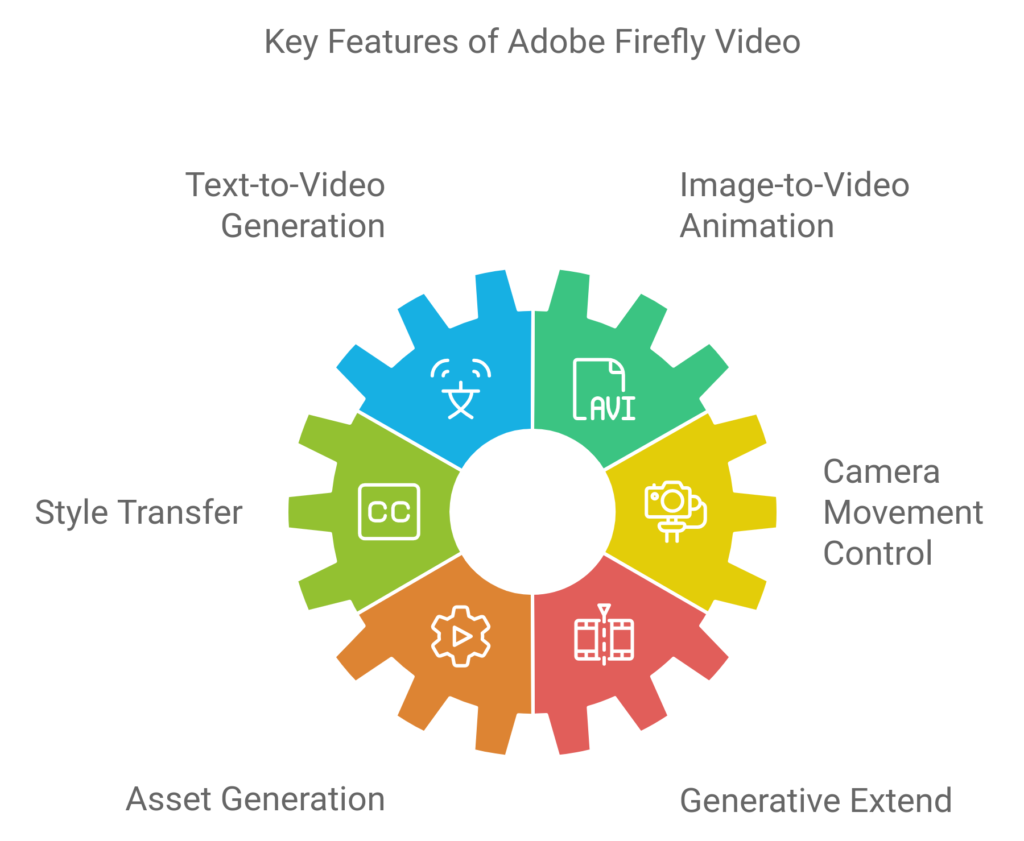
2. Minimax by Hailu: AI Video Generation in Record Time
Emerging from China, Minimax by Hailu has been making waves with its impressive AI video generation capabilities. The platform has demonstrated the ability to create short films in astonishingly short timeframes, with one notable example being a father-son duo creating a hamster-themed short film in less than an hour.
Minimax offers:
- Rapid video generation from text prompts
- High-quality, coherent short-form content creation
- Multi-lingual prompt support for global accessibility
The speed and quality of Minimax’s output represent a significant leap forward in AI video advancements, potentially revolutionizing the pre-visualization and concept development stages of filmmaking.
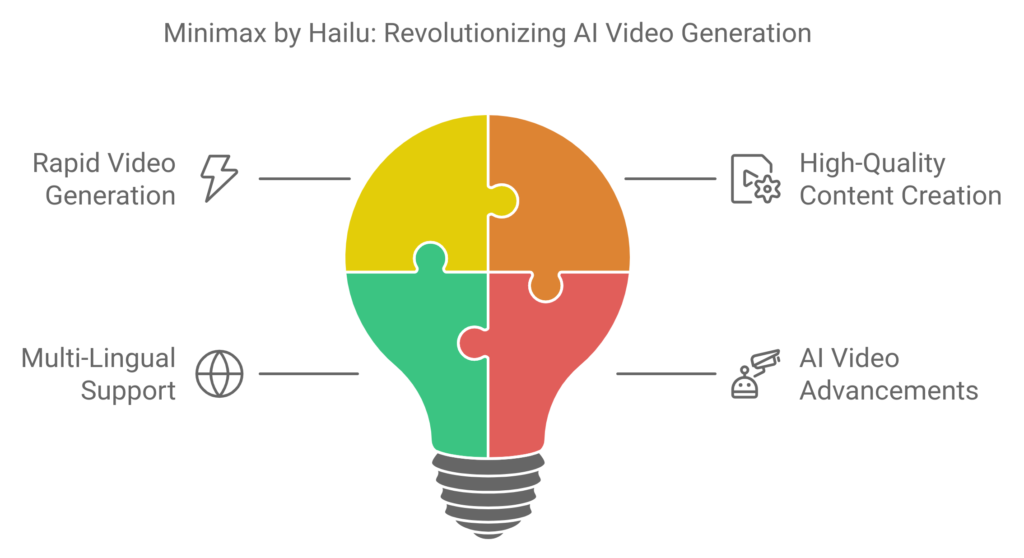
3. Luma’s Cinematography Controls: Precision in AI-Generated Videos
Luma has taken AI video creation to the next level by introducing cinematography controls. This feature allows creators to define specific camera movements within their AI-generated videos, bridging the gap between traditional filmmaking techniques and AI innovation.
Luma’s new features include:
- Camera movement presets (e.g., pull out, orbit, tracking shots)
- Custom camera path definition
- Integration of cinematic techniques in AI video generation
This advancement marks a significant step towards creating more professional and intentionally crafted AI-generated videos, aligning AI video advancements more closely with traditional filmmaking practices.
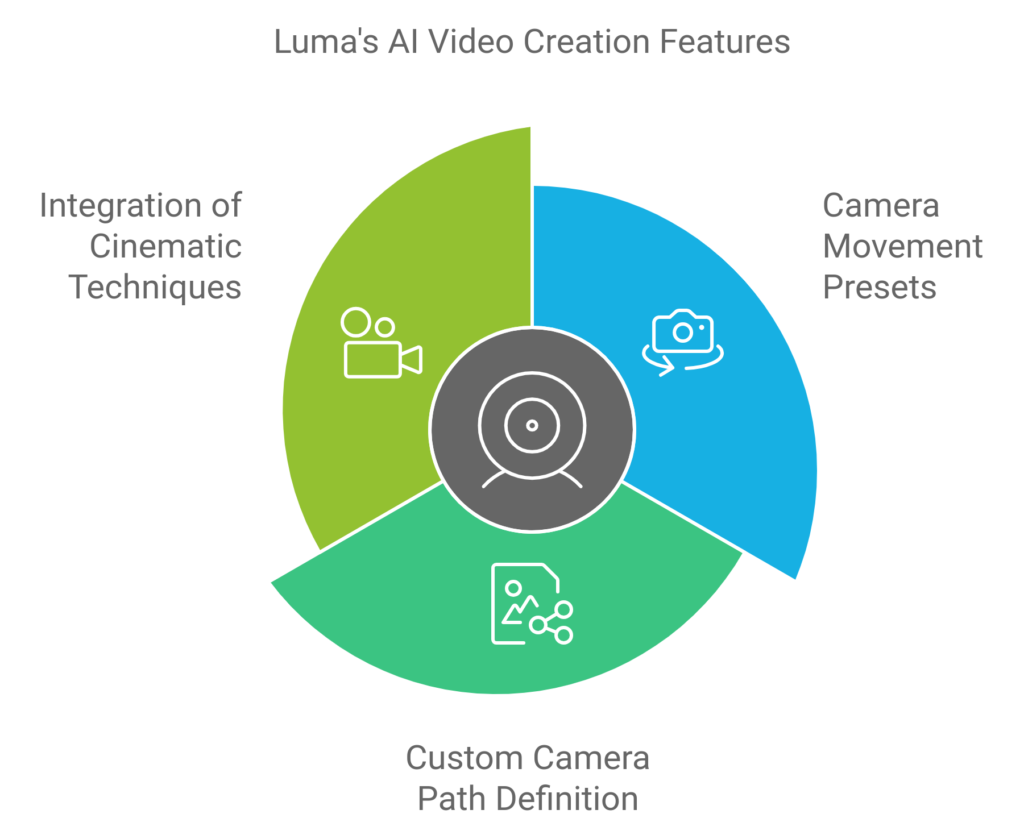
4. Runway Gen 3: Extending the Boundaries of Video Clips
Runway has pushed the envelope of AI video manipulation with its Gen 3 model, now capable of extending video clips up to 40 seconds. This feature opens up new possibilities for content creators and editors looking to expand on existing footage or create longer, more complex sequences.
Runway Gen 3’s extension capabilities:
- Seamless video clip extension
- Continuation of existing scenes and actions
- Potential for creating longer, narrative-driven content
While the extended clips may sometimes result in unexpected or surreal outcomes, this feature represents a significant leap in AI video advancements, offering creators new tools for experimentation and storytelling.
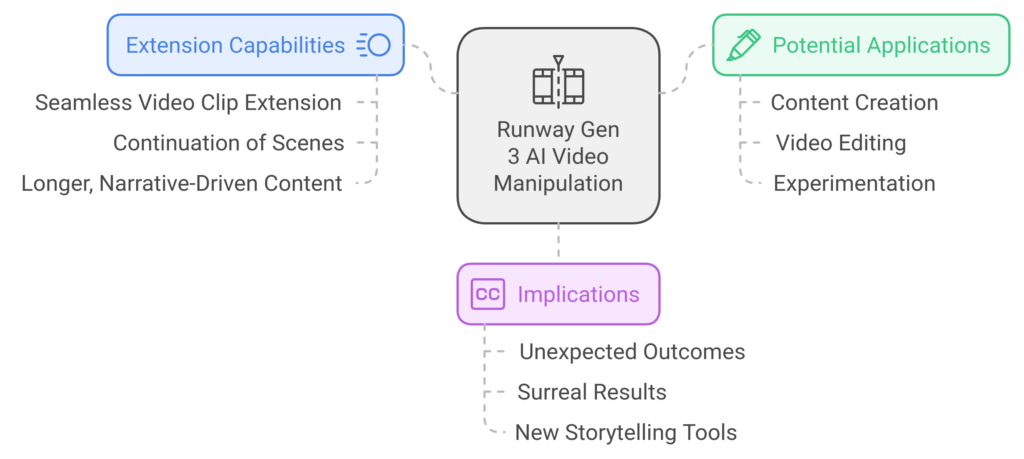
5. Meshi4: 3D Model Generation from 2D Images
Meshi has introduced Meshi4, a tool that bridges the gap between 2D imagery and 3D modeling. This AI video advancement allows users to generate 3D models from text descriptions or 2D images, potentially revolutionizing asset creation for 3D animation and visual effects.
Meshi4 features:
- Text-to-3D and Image-to-3D model generation
- Customizable polygon count for varying levels of detail
- Export options in multiple 3D file formats
- Basic animation capabilities for humanoid models
While the results may require refinement for production-ready use, Meshi4 represents a significant step towards automating and simplifying the 3D modeling process in video production.
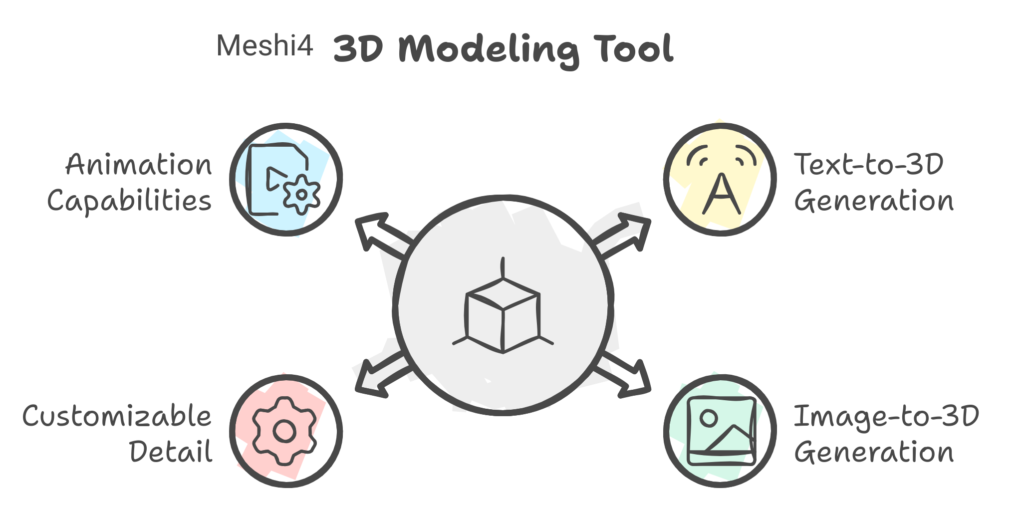
6. Legislative Developments: Shaping the Future of AI in Film
As AI video advancements continue to reshape the industry, legislation is evolving to address the new realities of AI-powered filmmaking. Two significant developments include:
- Framework Convention on Artificial Intelligence: A global treaty aimed at promoting safety and cooperation in AI development.
- California Assembly Bill 2602: Legislation protecting actors’ likenesses in AI-generated content and regulating the use of AI in film production.
These legislative efforts highlight the growing importance of AI video technologies and the need for ethical and legal frameworks to govern their use in the film industry.
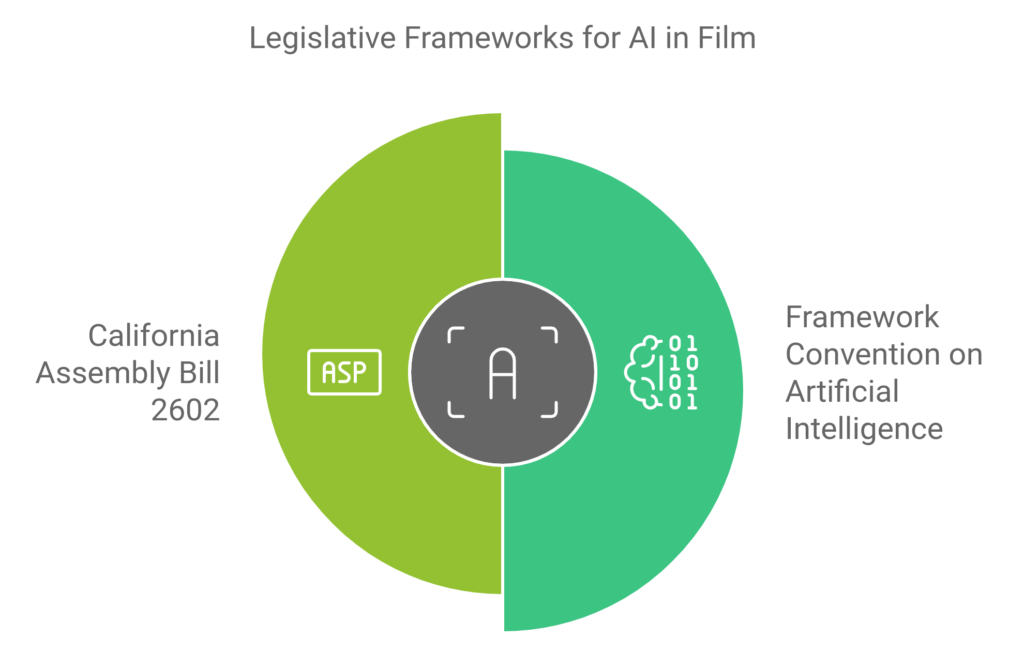
7. AI Filmmaking Meetups: Fostering Community and Innovation
The rapid pace of AI video advancements has sparked a surge in community events and meetups focused on AI filmmaking. These gatherings provide opportunities for creators to share knowledge, showcase work, and explore the latest technologies.
Notable upcoming events include:
- Curious Refuge meetups in Singapore and The Hague
- Runway meetups in Los Angeles and Quebec
- Collaborative event between LTX Studio and the Creative AI Network in London
These events underscore the growing interest in AI video technologies and their potential to reshape the filmmaking landscape.

8. AI-Generated Advertising: New Frontiers in Commercial Production
The advertising industry is quickly adopting AI video advancements to create innovative and cost-effective commercials. Recent examples, such as an AI-generated spec ad for Tesla, demonstrate the potential for AI to produce high-concept, visually striking commercial content.
Benefits of AI in advertising:
- Rapid prototyping of ad concepts
- Cost-effective production of high-quality visuals
- Ability to create speculative ads for pitching purposes
As AI video technologies continue to improve, we can expect to see more AI-generated content in the advertising space, potentially transforming how brands approach video marketing.
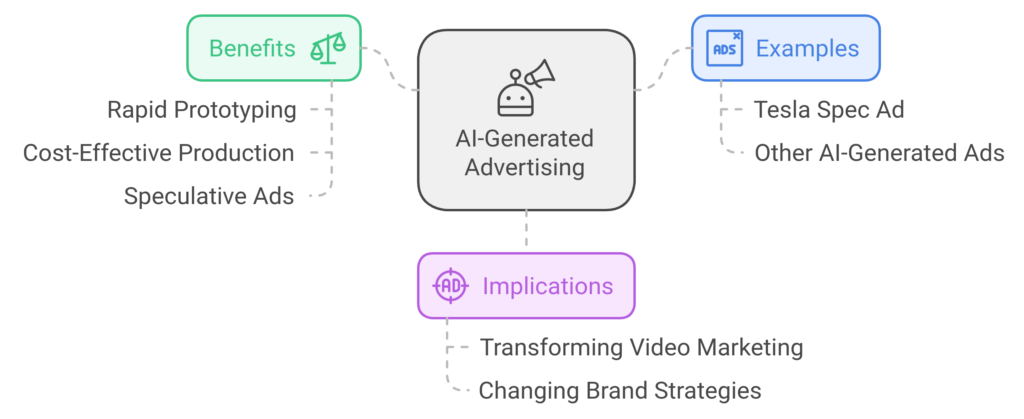
9. AI Film Competitions: Nurturing Creativity and Innovation
The rise of AI video advancements has given birth to a new genre of film competitions focused on AI-generated content. These contests encourage creators to push the boundaries of what’s possible with AI video tools and showcase the rapid evolution of the technology.
Recent and upcoming competitions include:
- AI advertising competition
- AI horror film competition
These events not only foster creativity but also serve as a proving ground for the latest AI video technologies, driving innovation in the field.
10. Comparative Analysis: Adobe Firefly vs. Runway
As AI video tools proliferate, understanding their relative strengths becomes crucial for creators. A comparison between Adobe Firefly and Runway reveals:
| Feature | Adobe Firefly | Runway |
|---|---|---|
| Text-to-Video | High quality, realistic | Good quality, sometimes cartoonish |
| Prompt Adherence | Excellent | Variable |
| Special Effects | Strong (e.g., lava scenes) | Inconsistent |
| Character Animation | Stable, with some color issues | More unpredictable |
| Landscape Generation | Highly accurate | More generic |
This comparison highlights the rapid progress in AI video advancements while also showing the areas where further development is needed.
11. The Future of AI in Filmmaking: Challenges and Opportunities
As we look to the future of AI video advancements, several key trends and challenges emerge:
- Integration with Traditional Techniques: The blending of AI-generated content with traditional filmmaking methods.
- Ethical Considerations: Addressing issues of likeness rights, job displacement, and creative ownership.
- Quality Improvements: Continued refinement of AI-generated visuals for more realistic and consistent output.
- Democratization of Filmmaking: Increased accessibility of high-quality video production tools to a broader range of creators.
- New Storytelling Possibilities: Exploration of narrative structures and visual styles uniquely enabled by AI.
As these AI video advancements continue to evolve, they promise to reshape not only how films are made but also the very nature of visual storytelling itself.
Embracing the AI Video Revolution
The landscape of filmmaking is undergoing a profound transformation, driven by rapid AI video advancements. From Adobe’s entry into the AI video market to the emergence of tools like Minimax and Luma, creators now have an unprecedented array of AI-powered tools at their disposal. As these technologies continue to evolve, they promise to democratize video production, push the boundaries of creativity, and open up new avenues for storytelling.
However, with these advancements come challenges. Ethical considerations, legal frameworks, and the integration of AI with traditional filmmaking techniques are all areas that will require careful navigation. As we move forward, it will be crucial for filmmakers, technologists, and policymakers to work together to harness the full potential of AI video advancements while addressing the complex issues they raise.
One thing is clear: the future of filmmaking is here, and it’s powered by AI. Whether you’re a seasoned director or an aspiring creator, now is the time to explore these new tools and join the AI video revolution. The only question that remains is: how will you use these AI video advancements to tell your story?
Adobe Firefly Video is a suite of AI-powered tools that integrates with Adobe's existing video editing software, enabling filmmakers to create videos from text prompts, animate images, and control camera movements, significantly enhancing the accessibility and quality of video production.
Minimax by Hailu allows for rapid video generation from text prompts, enabling the creation of high-quality short films in record time, which significantly streamlines the pre-visualization and concept development stages of filmmaking.
Luma's cinematography controls allow creators to define specific camera movements in AI-generated videos, merging traditional filmmaking techniques with AI capabilities, which enhances the professionalism and intentionality of the generated content.
Runway Gen 3 can extend video clips by up to 40 seconds, allowing creators to seamlessly continue existing scenes and actions, thus enabling the production of longer and more complex narratives.
Meshi4 is a tool that allows users to generate 3D models from text descriptions or 2D images, automating the 3D modeling process and simplifying asset creation for animation and visual effects.
Legislation is adapting to the rapid integration of AI in filmmaking, with measures like the Framework Convention on Artificial Intelligence and California Assembly Bill 2602 aimed at promoting ethical practices and protecting actors' likenesses in AI-generated content.
AI filmmaking meetups foster community and innovation by providing platforms for creators to share knowledge, showcase their work, and explore the latest AI technologies, thereby enhancing collaboration within the industry.
AI is rapidly transforming advertising by enabling the creation of innovative and cost-effective commercials, allowing for rapid prototyping of concepts and high-quality visuals, which enhances the efficiency of video marketing.
AI film competitions encourage creators to explore the potential of AI-generated content, nurturing creativity and innovation while serving as proving grounds for the latest technologies in the field.
The future of AI in filmmaking presents challenges such as ethical considerations, job displacement, and quality improvements, while offering opportunities for integration with traditional techniques, democratization of filmmaking, and new storytelling possibilities.


